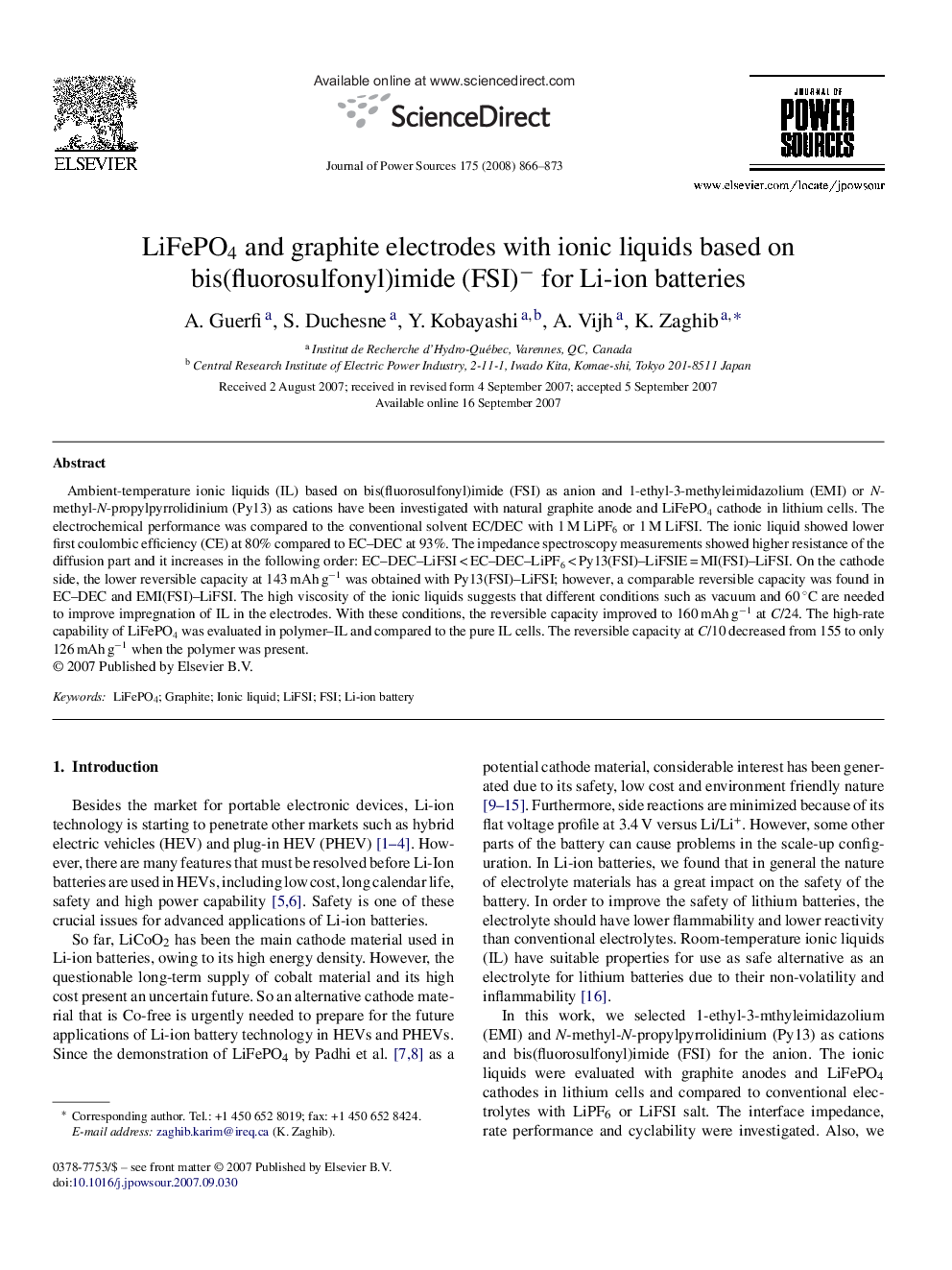| Article ID | Journal | Published Year | Pages | File Type |
|---|---|---|---|---|
| 1290893 | Journal of Power Sources | 2008 | 8 Pages |
Ambient-temperature ionic liquids (IL) based on bis(fluorosulfonyl)imide (FSI) as anion and 1-ethyl-3-methyleimidazolium (EMI) or N-methyl-N-propylpyrrolidinium (Py13) as cations have been investigated with natural graphite anode and LiFePO4 cathode in lithium cells. The electrochemical performance was compared to the conventional solvent EC/DEC with 1 M LiPF6 or 1 M LiFSI. The ionic liquid showed lower first coulombic efficiency (CE) at 80% compared to EC–DEC at 93%. The impedance spectroscopy measurements showed higher resistance of the diffusion part and it increases in the following order: EC–DEC–LiFSI < EC–DEC–LiPF6 < Py13(FSI)–LiFSIE = MI(FSI)–LiFSI. On the cathode side, the lower reversible capacity at 143 mAh g−1 was obtained with Py13(FSI)–LiFSI; however, a comparable reversible capacity was found in EC–DEC and EMI(FSI)–LiFSI. The high viscosity of the ionic liquids suggests that different conditions such as vacuum and 60 °C are needed to improve impregnation of IL in the electrodes. With these conditions, the reversible capacity improved to 160 mAh g−1 at C/24. The high-rate capability of LiFePO4 was evaluated in polymer–IL and compared to the pure IL cells. The reversible capacity at C/10 decreased from 155 to only 126 mAh g−1 when the polymer was present.
